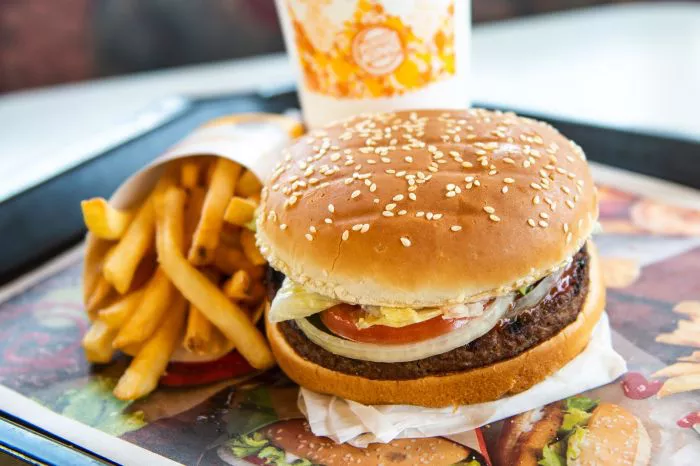Food preservatives are substances added to foods to prevent spoilage, extend shelf life, and maintain quality. They play a crucial role in modern food production and distribution, allowing consumers access to a wide variety of safe and convenient food options. However, concerns have been raised regarding their safety and potential health effects. In this comprehensive discussion, we will delve into the types of food preservatives, their functions, potential risks, regulatory aspects, and strategies for minimizing exposure.
Types of Food Preservatives
Food preservatives can be categorized into several groups based on their mode of action and chemical composition:
Antimicrobial Agents: These inhibit the growth of bacteria, fungi, and other microorganisms. Examples include:
Benzoates (e.g., sodium benzoate)
Sorbates (e.g., potassium sorbate)
Nitrites (e.g., sodium nitrite)
Antioxidants: These prevent oxidation, which can lead to rancidity and deterioration of flavor, color, and texture. Common antioxidants include:
Vitamin E (tocopherols)
Vitamin C (ascorbic acid)
Butylated hydroxyanisole (BHA)
Butylated hydroxytoluene (BHT)
Chelating Agents: These bind metal ions, preventing them from catalyzing oxidation reactions or microbial growth. Examples include:
EDTA (ethylenediaminetetraacetic acid)
Citric acid
Humectants: These retain moisture, preventing drying and extending shelf life. Common humectants include:
Glycerol
Propylene glycol
Functions of Food Preservatives
The primary functions of food preservatives are to maintain food safety and quality throughout its shelf life. They achieve this by:
Inhibiting microbial growth: Antimicrobial agents prevent the proliferation of bacteria, yeast, and molds that can cause food spoilage and foodborne illnesses.
Preventing oxidation: Antioxidants delay the onset of oxidative reactions, preserving the flavor, color, and nutritional integrity of foods.
Extending shelf life: By controlling microbial growth and oxidation, preservatives help prolong the time during which foods remain safe and acceptable for consumption.
Enhancing food texture: Humectants prevent foods from becoming dry and brittle, maintaining their texture and mouthfeel.
Potential Risks of Food Preservatives
While food preservatives serve important functions, concerns have been raised about their safety and potential health risks. Some of the key issues include:
Allergic Reactions: Certain preservatives, such as sulfites and benzoates, can cause allergic reactions in sensitive individuals. Symptoms may include hives, respiratory problems, and gastrointestinal distress.
Carcinogenicity: Nitrites and nitrosamines, commonly used in cured meats, have been linked to an increased risk of cancer, particularly colorectal cancer. However, the carcinogenic potential of these compounds depends on factors such as dosage and cooking methods.
Endocrine Disruption: Some preservatives, such as BHA and BHT, have been associated with endocrine disruption, which can interfere with hormonal balance and reproductive health.
Neurological Effects: Certain food dyes, such as tartrazine (FD&C Yellow No. 5), have been implicated in hyperactivity and behavioral problems in children. While the evidence is not conclusive, some studies suggest a possible link between artificial food colors and ADHD symptoms.
Antimicrobial Resistance: The widespread use of antimicrobial preservatives in food production may contribute to the development of antimicrobial-resistant strains of bacteria, posing a threat to public health.
Regulatory Aspects
To ensure the safety and proper use of food preservatives, regulatory agencies around the world establish standards, guidelines, and permissible limits for their use in foods. In the United States, the Food and Drug Administration (FDA) regulates food additives, including preservatives, under the Food, Drug, and Cosmetic Act.
Before a preservative can be approved for use in foods, it must undergo rigorous safety assessments, including toxicological studies to evaluate its potential health effects. The FDA evaluates factors such as the chemical’s structure, metabolism, and potential for accumulation in the body.
Once approved, food preservatives are subject to ongoing monitoring to ensure their safety and compliance with regulatory standards. Manufacturers are required to adhere to Good Manufacturing Practices (GMPs) and label their products accurately, including the type and amount of preservatives used.
Strategies for Minimizing Exposure
While food preservatives are generally recognized as safe when used within regulatory limits, consumers can take steps to minimize their exposure:
Read Labels: Pay attention to ingredient lists and look for foods with minimal or no added preservatives. Opt for fresh, whole foods whenever possible.
Choose Natural Preservatives: Some natural compounds, such as vinegar, salt, sugar, and spices, have preservative properties and can be used to extend the shelf life of foods without the need for synthetic additives.
Limit Processed Foods: Processed and packaged foods are more likely to contain added preservatives. Reduce your intake of these foods and focus on homemade meals prepared with fresh ingredients.
Be Mindful of Additives: Avoid foods with artificial colors, flavors, and preservatives whenever feasible. Choose products with simpler ingredient lists and fewer additives.
Practice Safe Food Handling: Proper food storage, handling, and cooking can help prevent foodborne illnesses and reduce the need for preservatives. Follow recommended guidelines for storing perishable foods, and cook foods to the appropriate temperature to kill harmful bacteria.
Conclusion
Food preservatives play a vital role in modern food production, helping to ensure food safety, quality, and availability. While concerns have been raised about their safety and potential health effects, regulatory agencies closely monitor their use to protect public health. By understanding the functions, risks, and regulatory aspects of food preservatives, consumers can make informed choices to minimize their exposure and maintain a healthy diet. Additionally, ongoing research into alternative preservation methods and natural alternatives may offer promising avenues for reducing reliance on synthetic additives in the future.


